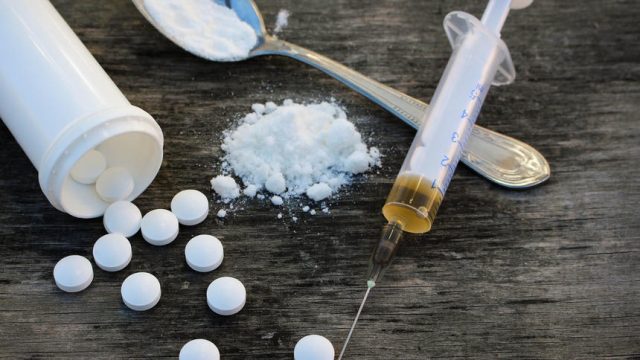Rep. Kevin Cramer: Opioid Crisis a Great Equalizer in Its Devastation

This guest post was submitted by Republican Congressman Kevin Cramer who is currently campaigning for the U.S. Senate.
Our nation is in the midst of the deadliest drug crisis in its history. The nearly 64,000 opioid overdose deaths in 2016 are fast approaching the 88,000 killed by alcohol each year. And, like alcohol, the opioid crisis is a great equalizer in its devastation. It doesn’t matter if you live on a farm, in the middle of a city, on an Indian reservation, a suburb or a small town. It doesn’t matter your lot in life, your income level or social status. It affects people of all walks of life.
Along with prescription painkillers, heroin and fentanyl are among the most deadly opioids. In statistics collected by the Center for Disease Control, the 64,000 opioid overdose deaths in 2016 are more than three times as many as in 1999, surpassing fatalities from automobile crashes and homicides as the top cause of death among Americans under age 50.
Last October President Trump issued a proclamation declaring this crisis a nationwide public health emergency. In April, I participated in a listening session on the crisis, hosted by the White House.
[mks_pullquote align=”right” width=”300″ size=”24″ bg_color=”#ffffff” txt_color=”#000000″]It doesn’t matter if you live on a farm, in the middle of a city, on an Indian reservation, a suburb or a small town. It doesn’t matter your lot in life, your income level or social status. It affects people of all walks of life.[/mks_pullquote]
Between 2016 and 2017, North Dakota’s overdose deaths increased by 29 percent. The recent visit to Fargo by Attorney General Jeff Sessions highlighted its magnitude, along with the benefits of working together in the three battlegrounds of this crisis – prevention, law enforcement and treatment. He announced the unsealing of two indictments in a fentanyl case targeting an international opioid ring that caused the death of a young Grand Forks man in January 2015. He praised the Grand Forks law enforcement officers whose investigative work helped bring the indictments in the case. In addition to North Dakota, this opioid ring impacted another 10 states from coast to coast.
I join Attorney General Sessions in expressing my appreciation for the professional work by all North Dakota law enforcement officials involved in this case who helped identify the criminals behind this deadly international drug ring. I know they are continuing to work overtime on other cases to keep drugs out of our state and to prosecute those who are selling them illegally.
North Dakota is making progress on prevention and treatment, thanks in large part to the advocacy of First Lady Kathryn Helgaas Burgum, and aided by legislation passed in Congress. The House Energy and Commerce Committee, of which I am a member, has considered more than 60 bills related to opioids. We hope to have significant legislation ready for the House to pass in the near future.
The Energy and Commerce Committee has taken the lead in the House on the opioid crisis, holding its first hearing in 2012. Major opioid bills have already come through the committee, passed Congress and become law. They include the Comprehensive Addiction and Recovery Act (CARA) and the 21st Century Cures Act, which provided $1 billion in funding to help states and territories combat opioid addiction. By the end of this year, North Dakota will have received $4 million in Opioid State Targeted Response grants.
Last month, I joined two Arkansas colleagues, Senator Tom Cotton and Congressman French Hill, in co-sponsoring legislation addressing the fentanyl crisis. The House version of the bill is H.R. 5459, the Ending the Fentanyl Crisis Act of 2018, which strengthens mandatory minimum sentences for fentanyl traffickers and provides resources to the Postal Service to prevent the illegal smuggling of fentanyl and other opiates through the postal system.
Today, a trafficker with two grams of fentanyl is treated like a trafficker with five grams of heroin, despite the fentanyl being 50 times deadlier than heroin. Current mandatory minimums only apply after a trafficker possesses 40 grams of a substance, including fentanyl, which could be enough to kill up to 20,000 people. Fentanyl is known to be the cause of death of a third of the 175 Americans who die daily from opioids.
In declaring the opioid crisis a nationwide public health emergency, President Trump set a goal of reducing opioid prescriptions by one-third in three years, as well as increasing funding for treatment and prevention programs. One death is too many, and I will stand shoulder to shoulder with the President and anybody and everybody in Congress to help meet these goals and solve this crisis.




